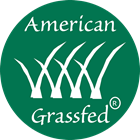(Denver, CO) American Grassfed Association’s Board of Directors has given final approval to the new AGA Grassfed Dairy Standards. More than a year in development, the standard is the result of the work of a diverse group of stakeholders, including representatives from AGA, Organic Valley, Maple Hill Creamery, Traders Point Farm Organics, Trickling Springs Creamery, Cabriejo Creamery, Pennsylvania Certified Organic and NOFA New York. Independent dairy consultants Dr. Meg Cattell, Dr. Arden Nelson and Dr. Silvia Abel-Caine contributed their expertise.
The working group collaborated using a three-pronged approach to create the science-based, rigorous marketing claim:
- To ensure the healthy and humane treatment of dairy animals.
- To meet consumer expectations about grassfed dairy products.
- To be economically feasible for small and medium-size dairy farmers.
AGA hosted stakeholder meetings in Denver with facilitator Mark Lipson, former USDA organic policy advisor and current research associate at the Center for Agroecology & Sustainable Food Systems, University of California Santa Cruz. The standards were drafted by AGA’s certification committee under the direction of Don Davis. The working group sought public comment from both consumers and producers during the process.
“We are grateful to Drs. Cattell, Nelson, and Abel-Caine, and also Don Davis, who worked diligently on this standard for more than a year,” said Carrie Balkcom, AGA’s executive director. “We also want to thank all of the other stakeholders for their collaboration and commitment to creating a workable grassfed dairy standard that will benefit producers and consumers alike.”
The working group is currently developing a timeline and procedure for implementation of the new standard, with an anticipated roll-out at AGA’s annual producer conference February 8-9 at the Stone Barns Center for Food and Agriculture in Pocantico Hills, NY.
